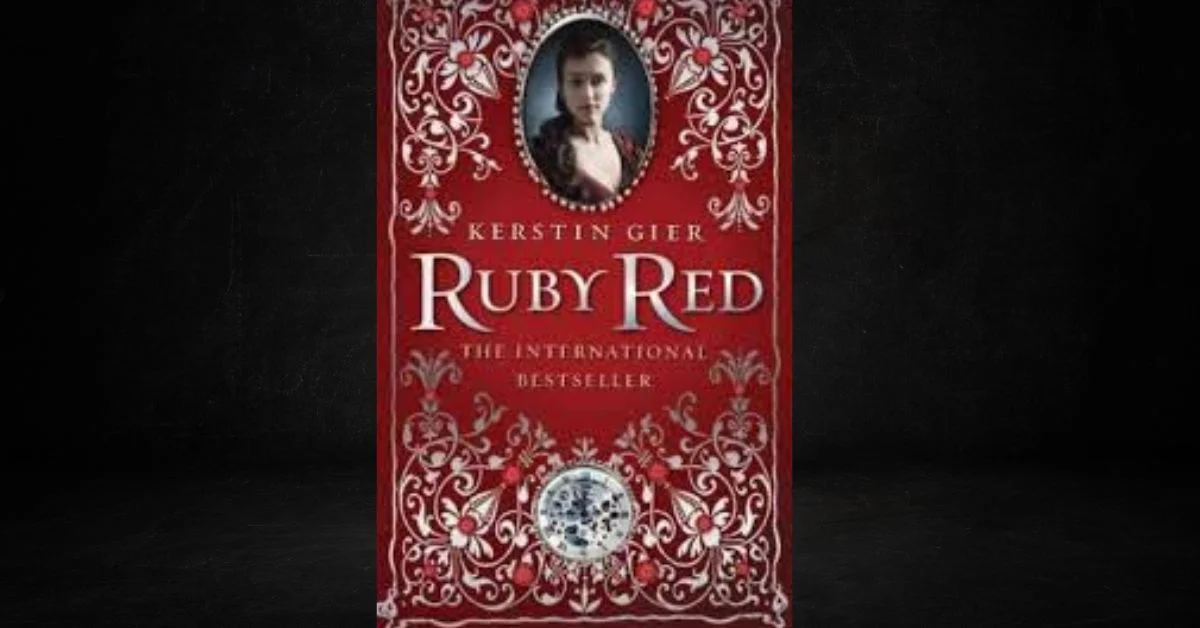In the realm of young adult fantasy, where love triangles and magical legacies often reign, few series manage to blend science fiction, historical intrigue, and emotional maturation with the grace and intensity of Kerstin Gier’s Ruby Red Trilogy. Originally published in German and later translated into over 25 languages, this trilogy—comprising Ruby Red, Sapphire Blue, and Emerald Green—offers a unique take on time travel that feels both whimsical and terrifyingly grounded.
If you’re looking for a clear, intelligent, and detailed summary of the Ruby Red Trilogy, this guide will walk you through each book’s core narrative arc, major character developments, and underlying themes—without spoiling every twist. Whether you’re a first-time reader preparing to start the series or a fan revisiting the story, this article explains the trilogy in a structured, digestible, and thought-provoking way.
What Is the Ruby Red Trilogy?
The Ruby Red Trilogy is a time-travel young adult fantasy series written by German author Kerstin Gier. It centers around Gwyneth Shepherd, a seemingly ordinary teenager living in contemporary London who discovers she has inherited a rare time-travel gene. This revelation throws her into the secretive and often dangerous world of a time-traveling society operating under centuries-old rules and shrouded in secrecy.
Each book in the trilogy corresponds to a gemstone—Ruby Red, Sapphire Blue, and Emerald Green—reflecting not just the titles but also the identities of the time travelers, each assigned a symbolic stone in a larger prophecy that underpins the narrative tension.
At its core, the trilogy explores destiny vs. agency, the complexity of intergenerational loyalty, and the emotional disorientation of adolescence magnified by literal jumps through time.
Book One: Ruby Red
Introduction to the Time-Travel Gene
In Ruby Red, we meet Gwyneth Shepherd, a sixteen-year-old living with her eccentric extended family in a London townhouse. Her cousin Charlotte has long been believed to be the heir of the family’s time-travel gene, having trained her entire life in history, languages, and etiquette. But as fate would have it, it’s Gwyneth, not Charlotte, who suddenly finds herself uncontrollably transported to the past.
The Guardians and the Chronograph
Upon her first spontaneous leap through time, Gwyneth is rushed into the care of the Guardians, a secret society dedicated to managing time travel and protecting historical timelines. The society centers its work around a mysterious device known as the Chronograph, which stabilizes time travel by using the blood of the twelve known time travelers to “complete the circle.”
Enter Gideon de Villiers
Gwyneth’s reluctant partner in time is Gideon de Villiers, the handsome, confident, and maddeningly patronizing heir to the other time-traveling family line. Their relationship starts off icy, with Gideon doubtful of Gwyneth’s abilities and loyalty, but chemistry simmers beneath the surface.
Secrets and Suspicion
As Gwyneth becomes increasingly aware that the Guardians may be keeping secrets from her—particularly regarding the true purpose of the Chronograph—her trust in the society and in Gideon begins to falter. Through her unauthorized journeys and cryptic discoveries, she starts questioning whether her role is as straightforward as everyone insists.
Core Themes Introduced:
- Distrust in authority
- The burden of inherited legacy
- Female agency in male-dominated systems
Book Two: Sapphire Blue
Deeper Into the Past—and the Plot
Sapphire Blue picks up immediately after the events of Ruby Red. With her official initiation behind her, Gwyneth begins taking regular time-travel missions with Gideon. They travel to different centuries, often interacting with important historical figures and piecing together more about the true nature of the prophecy surrounding the time travelers.
Gwyneth’s Unusual Gifts
In addition to her time-travel ability, Gwyneth begins to show signs of possessing other, unexplainable talents—such as communicating with ghosts (including a particularly entertaining gargoyle named Xemerius) and having visions that don’t fit into the Guardian’s tidy schema. These gifts mark her as different and possibly more powerful than anyone anticipated.
The Prophecy Thickens
The trilogy’s central mystery begins to unfurl more clearly in Sapphire Blue. The Guardians believe that once the Chronograph is activated with the blood of all twelve travelers, a great power will be unleashed. But Gwyneth uncovers hints that this power may not be benign. She discovers references to the Count Saint-Germain, a manipulative and charismatic founder of the time-travel society, whose vision for the future may be more dystopian than divine.
Relationship Turmoil
As the truth becomes murkier, Gwyneth’s relationship with Gideon reaches a breaking point. Romantic tensions boil over, fueled by misunderstanding, betrayal, and conflicting loyalties. These emotional upheavals are more than teen drama—they mirror the thematic instability of a world built on secrecy and control.
Notable Developments:
- Expansion of magical realism elements
- Emergence of personal power
- Foreshadowing of betrayal within the Guardian order
Book Three: Emerald Green
The Truth Comes to Light
Emerald Green functions as both the climax and resolution of the Ruby Red Trilogy. As Gwyneth delves further into historical records and secret documents, she begins to uncover the truth about her own ancestry, the original intent behind the Chronograph, and the terrifying reality of the prophecy.
Breaking the Cycle
Gwyneth’s journey becomes a fight not only against time but against preordained fate. Her evolution from a passive participant to a self-directed agent is fully realized as she makes choices that defy the Guardians, resist Gideon’s initial protectiveness, and question every truth she has been told.
Confrontation with the Count
The long-feared confrontation with Count Saint-Germain finally occurs. It is not merely a physical battle, but a psychological war of will, ideology, and generational rebellion. Gwyneth is no longer a girl caught in time; she becomes the key to disrupting a cycle that has harmed countless lives.
Redemption and Reconciliation
In the final chapters, secrets are revealed, characters are redeemed, and fractured relationships begin to mend. The trilogy closes not with a neat bow, but with earned clarity—a statement about rewriting destiny, even when the past feels immutable.
Major Takeaways:
- Individual agency versus institutional tradition
- The emotional costs of prophecy
- Coming-of-age through resistance
Character Overview
Gwyneth Shepherd
The protagonist—courageous, curious, and emotionally intelligent. Her growth defines the trilogy’s arc.
Gideon de Villiers
A complex romantic lead—arrogant but emotionally conflicted. His evolution mirrors the collapse of blind allegiance.
Count Saint-Germain
The antagonist—charismatic and dangerous, embodying the dangers of institutionalized power.
Xemerius
A ghostly gargoyle who provides comic relief and critical insight. Represents the “old world” assisting the new.
Themes Across the Trilogy
1. Time and Identity
Time travel here isn’t just a gimmick—it reflects the instability of adolescent identity, the pressure of inherited expectation, and the eternal question of how we define ourselves across contexts.
2. Trust and Deception
Whether within family, romance, or institutions, trust is repeatedly tested. The series asks readers to interrogate who controls knowledge—and to what end.
3. Legacy and Rebellion
The trilogy frames legacy as both a gift and a prison. Breaking away from inherited roles becomes the ultimate act of self-definition.
4. Love as Evolution: Ruby Red Trilogy
The romance in the series isn’t static or purely escapist—it is forged through pain, misunderstanding, and choice. Love grows as the characters grow.
Why the Ruby Red Trilogy Still Resonates in 2025
While the fantasy genre has evolved, the Ruby Red Trilogy remains a standout for its elegant world-building, emotional depth, and refusal to simplify complex issues into binary outcomes. It’s a rare example of young adult literature that respects its audience’s intelligence, asking readers to consider history not as fixed, but as participatory.
More than a story about time travel, it is a narrative about becoming one’s own historian—about challenging the scripts written for us, and daring to write new ones.
Conclusion: Ruby Red Trilogy
The Ruby Red Trilogy is not simply a whimsical romp through centuries past—it is a layered, genre-blending saga that uses time travel as a metaphor for emotional discovery, systemic critique, and personal empowerment. With a protagonist who is both vulnerable and formidable, a narrative that rewards close reading, and themes that continue to feel urgently relevant, the trilogy deserves its place among the classics of YA fantasy.
Whether you’re discovering Gwyneth’s world for the first time or revisiting it with more mature eyes, the Ruby Red Trilogy offers not just entertainment but enduring insight—a journey not only through time, but through what it means to truly live.
FAQs: Ruby Red Trilogy
1. What is the Ruby Red Trilogy about?
It follows Gwyneth Shepherd, a teenager who discovers she can time travel. She becomes entangled in a secret society, historical conspiracies, and a prophecy that may change everything.
2. What is the reading order for the Ruby Red Trilogy?
Start with Ruby Red, continue with Sapphire Blue, and finish with Emerald Green—in that order, as the story is linear.
3. Is the Ruby Red Trilogy suitable for younger readers?
Yes. It’s appropriate for ages 12 and up, with themes of identity, family, romance, and adventure—though younger readers may miss some nuance.
4. Are there movies based on the Ruby Red books?
Yes, German-language film adaptations exist, though they differ in tone and plot details from the novels. Many fans prefer the books’ original depth.
5. Is the time travel in the Ruby Red Trilogy scientific or magical?
The time travel is presented as hereditary and partially scientific via the Chronograph, but with mystical and symbolic undertones, creating a blend of genres.
For more information, click here.









